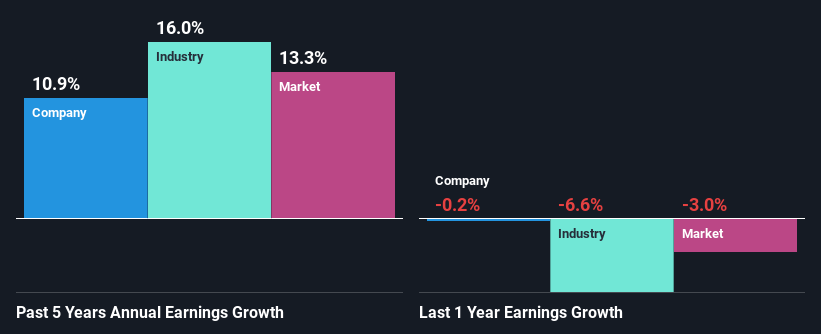Thermo Fisher Scientific Inc.'s (NYSE:TMO) Stock Is Going Strong: Is the Market Following Fundamentals?
Thermo Fisher Scientific (NYSE:TMO) has had a great run on the share market with its stock up by a significant 9.0% over the last month. Given that the market rewards strong financials in the long-term, we wonder if that is the case in this instance. In this article, we decided to focus on Thermo Fisher Scientific's ROE.
Return on Equity or ROE is a test of how effectively a company is growing its value and managing investors’ money. In short, ROE shows the profit each dollar generates with respect to its shareholder investments.
See our latest analysis for Thermo Fisher Scientific
How Is ROE Calculated?
ROE can be calculated by using the formula:
Return on Equity = Net Profit (from continuing operations) ÷ Shareholders' Equity
So, based on the above formula, the ROE for Thermo Fisher Scientific is:
13% = US$6.0b ÷ US$46b (Based on the trailing twelve months to March 2024).
The 'return' is the income the business earned over the last year. That means that for every $1 worth of shareholders' equity, the company generated $0.13 in profit.
Why Is ROE Important For Earnings Growth?
So far, we've learned that ROE is a measure of a company's profitability. We now need to evaluate how much profit the company reinvests or "retains" for future growth which then gives us an idea about the growth potential of the company. Generally speaking, other things being equal, firms with a high return on equity and profit retention, have a higher growth rate than firms that don’t share these attributes.
A Side By Side comparison of Thermo Fisher Scientific's Earnings Growth And 13% ROE
To start with, Thermo Fisher Scientific's ROE looks acceptable. Especially when compared to the industry average of 10% the company's ROE looks pretty impressive. Probably as a result of this, Thermo Fisher Scientific was able to see a decent growth of 11% over the last five years.
As a next step, we compared Thermo Fisher Scientific's net income growth with the industry and were disappointed to see that the company's growth is lower than the industry average growth of 16% in the same period.
Earnings growth is a huge factor in stock valuation. What investors need to determine next is if the expected earnings growth, or the lack of it, is already built into the share price. This then helps them determine if the stock is placed for a bright or bleak future. Is Thermo Fisher Scientific fairly valued compared to other companies? These 3 valuation measures might help you decide.
Is Thermo Fisher Scientific Making Efficient Use Of Its Profits?
Thermo Fisher Scientific has a low three-year median payout ratio of 6.5%, meaning that the company retains the remaining 94% of its profits. This suggests that the management is reinvesting most of the profits to grow the business.
Moreover, Thermo Fisher Scientific is determined to keep sharing its profits with shareholders which we infer from its long history of paying a dividend for at least ten years. Upon studying the latest analysts' consensus data, we found that the company is expected to keep paying out approximately 6.6% of its profits over the next three years. Still, forecasts suggest that Thermo Fisher Scientific's future ROE will rise to 18% even though the the company's payout ratio is not expected to change by much.
Conclusion
On the whole, we feel that Thermo Fisher Scientific's performance has been quite good. Specifically, we like that the company is reinvesting a huge chunk of its profits at a high rate of return. This of course has caused the company to see a good amount of growth in its earnings. The latest industry analyst forecasts show that the company is expected to maintain its current growth rate. To know more about the company's future earnings growth forecasts take a look at this free report on analyst forecasts for the company to find out more.
Have feedback on this article? Concerned about the content? Get in touch with us directly. Alternatively, email editorial-team (at) simplywallst.com.
This article by Simply Wall St is general in nature. We provide commentary based on historical data and analyst forecasts only using an unbiased methodology and our articles are not intended to be financial advice. It does not constitute a recommendation to buy or sell any stock, and does not take account of your objectives, or your financial situation. We aim to bring you long-term focused analysis driven by fundamental data. Note that our analysis may not factor in the latest price-sensitive company announcements or qualitative material. Simply Wall St has no position in any stocks mentioned.

 Yahoo Finanzen
Yahoo Finanzen 
